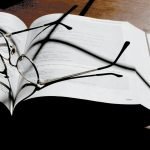CranioSacral Therapy I

- This event has passed.
CranioSacral Therapy I
October 22, 2010 - October 24, 2010
Cranio-sacral therapy is a gentle yet very effective soft tissue therapeutic modality that is appropriate for any age patient. You will learn how to perform a patient assessment that would include the musculo-skeletal system, the body diaphragms, and the cranio-sacral rhythm and cranial membranes, as well as recognize the patterns of restriction. Techniques of joint unwinding and direction of energy will be used to affect different joints, and release specific muscle groups and myofascial trains. The fascial system and its critical role in health and well-being will be discussed in detail, from the specific to the whole body.
Learn to recognize and assess the cranio-sacral rhythm at various points in the body, and to use it as a diagnostic tool. Perform a still-point technique and dural tube glide; and explore the role of these techniques in normalizing tensions throughout the body. Additionally, learn about the importance of the various membranes within the cranio-sacral system, including ways to assess restriction within the membrane system, and recognize its implications on general well-being and health.
Seminar includes a combination of lecture, demonstration and hands-on practice. The general public can use the techniques on friends and family members. Healthcare professionals can begin using cranio-sacral techniques in their practice after completing Level I; as well as take all three levels to pursue the optional certification process. There is also an option to retake this seminar for a reduced fee of $175. (Bring your binder with your handouts.)
Upon completion of this seminar you will be able to:
- Identify a particular learning style (auditory, tactile or visual) and describe how to use this knowledge in communicating with a patient/client.
- Describe the evolution of cranio-sacral (CS) therapy from its osteopathic roots to present day form.
- Describe the basic elements of the CS rhythm.
- Accurately feel the CS rhythm in all parts of the body (differentiating between flexion and extension phases).
- Induce a still point in the CS rhythm.
- Describe the function of the fascia and identify lesion patterns for the diaphragms and joints.
- Demonstrate a release of fascial restrictions in the diaphragms and joints.
- Differentiate between live, fixed and compressed sphenoid lesion patterns.
- Describe the structure and function of the tentorium and falx.
- Demonstrate an assessment and release of the falx and tentorium.
- Describe the basic anatomy of the sphenoid.
- Describe the structure and function of the dural tube.
- Describe the structure and function of the sacral base.
- Demonstrate a dural tube glide.
- Demonstrate the release of the sacroiliac lesion patterns.
- Assess a treatment and put it into written form in SOAP format.






